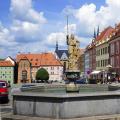The difficulty lies in the need to accurately identify poisonous plants. Limit your choices to plants you know well, which will likely include palms, bamboos, and certain fruits.
In search of plant food, move along rivers and streams if possible. Their shores are usually open to sunlight, and this is where the plants will have the freshest shoots and fruits. Collecting plants while on a raft is less tiring than walking overland. Plant food is also no less useful than animal food.
There are plenty of edible plants in the jungle, so only take the ones you need to fill your fill, as supplies soon start to deteriorate.
Edible jungle plants
Nipa bushy or mangrove tree
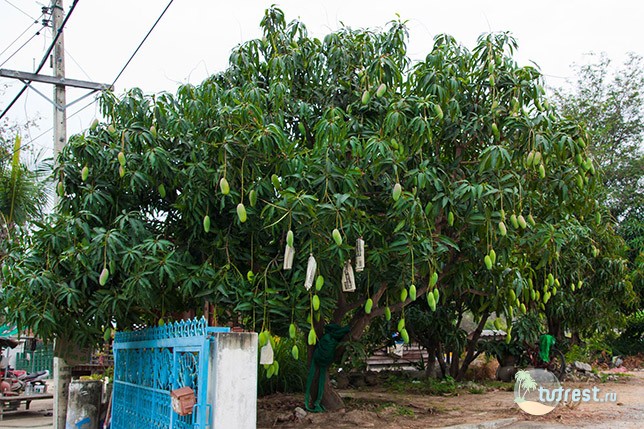
Description: large fern-shaped leaves are collected at the base to form a short trunk. Grows up to 6 m tall.
Directions for use: thick sweet juice and fruits are edible.
Banana ordinary and banana paradise
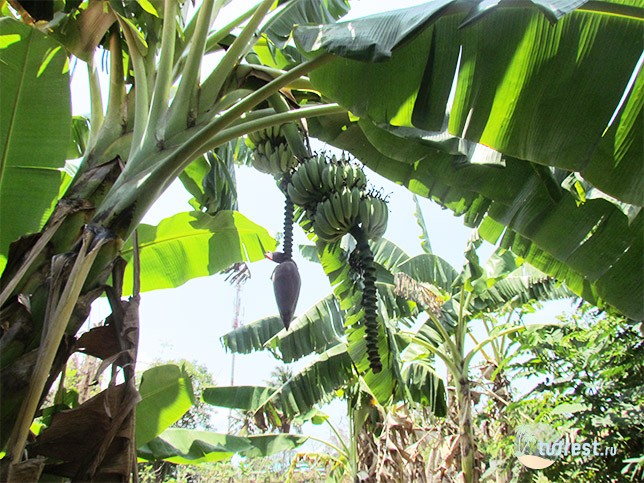
Description: height up to 10 m. Large, hard, leathery leaves. The characteristic "furry" trunk. Banana is widespread in the tropics.
Directions for use: The well-known fruits are eaten raw. The fruits of the paradise banana must be boiled or fried over a fire. Shoots of young plants and the inner part of the root are also edible.
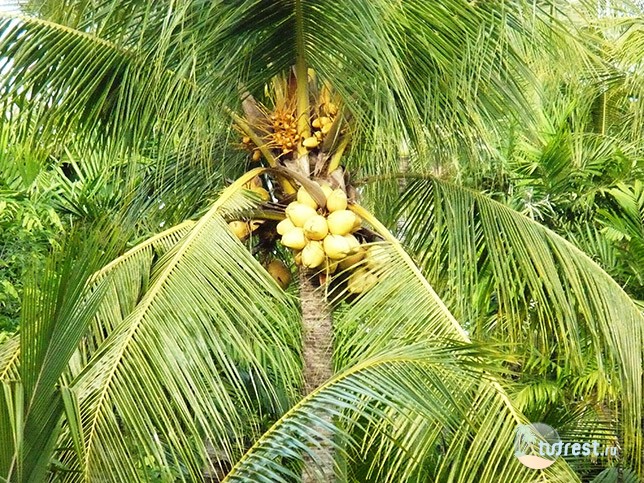
Description: Easily distinguishable by clusters of nuts high above the ground. It grows up to 30 m in height.
Directions for use: the green shell of the nuts must be removed. The nut is valuable for milk and pulp. Overuse of coconut milk can cause diarrhea.
Papaya

Description: a tree with a height of 2 to 6 m. Large fruits in the process of ripening change color from green to yellow or orange. The barrel is hollow.
Directions for use: fruits are eaten raw (do not get the juice of unripe fruits in your eyes, as this will cause a burning sensation). Young leaves, shoots and flowers are boiled.
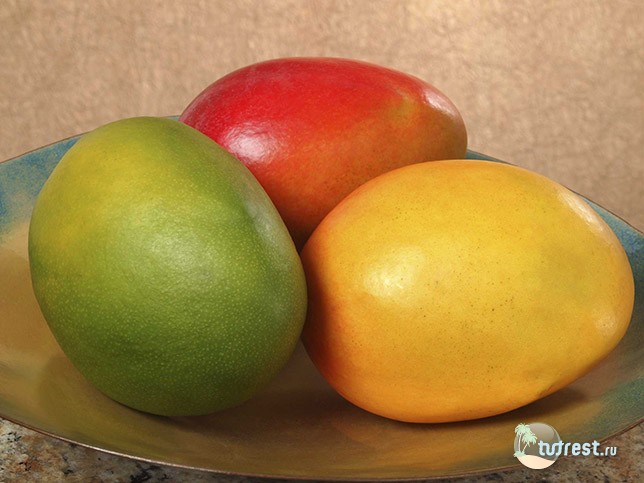
Description: grows in moist soils. Oval fruit up to 13 cm in diameter. Color from green to orange.
Fig tree or fig (fig tree)
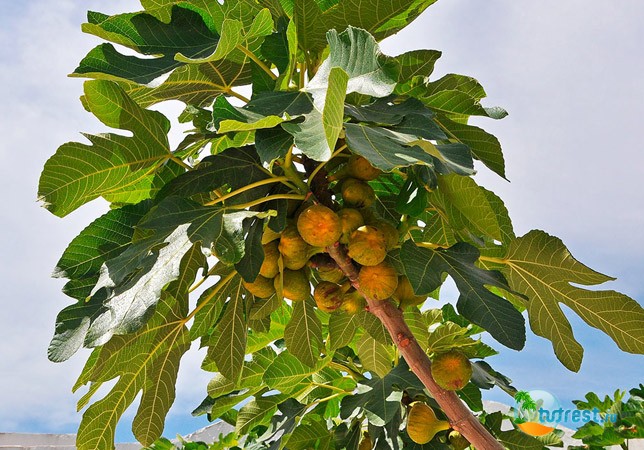
Description: tree with aerial roots and rounded evergreen leaves. Pear-shaped fruits.
Directions for use: The fruits are eaten raw.
Description: A climbing legume with blue flowers and lancet leaves. The pods are brown, about 20 cm long.
Directions for use: Leaves can be eaten raw. The pods are boiled and eaten whole. Old beans are fried. The protein-rich roots are eaten raw.
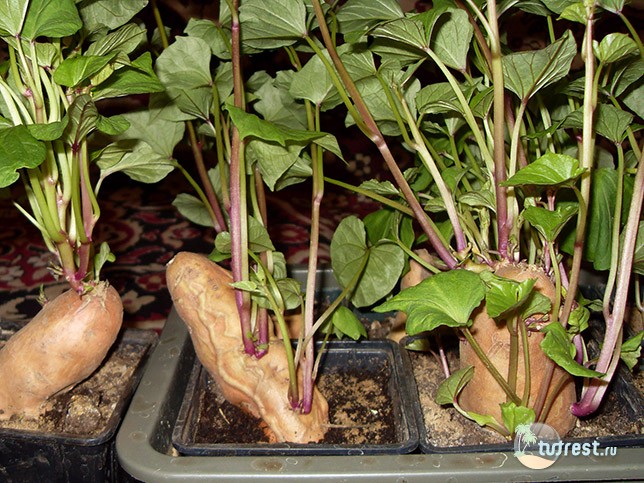
Description: climbing plant with pointed leaves. Large edible tubers that look like potatoes.
Directions for use: the tubers are boiled or fried.
These plants are common in most tropical regions, although there are hundreds of others that can be eaten in one way or another. When studying the question of plant food sources in the tropics, pay special attention to distinctive features poisonous species, including the following: castor bean, laportea, strychnos vomitus, white mangrove, hura, velvet beans, pangs. The latter plant is found mainly in the Malay jungle. By saturating your brain with this information, survival in the jungle will become unhindered.
Ganges, foothills and for. Compared to the more northern regions, conditions there change quite little over the year. means that the amount of light and the length of the day remain practically the same throughout the year. The only hesitation is in the rainfall.
Hot, humid jungles have covered the Earth for tens of millions of years. Perhaps this was one of the reasons for the truly incredible diversity of life. And this wealth is not limited only to plants.
In the jungle, there is no clear change of seasons, the trees do not receive a climatic signal, according to which they would simultaneously shed their leaves, as in latitudes. Here, each species has its own "schedule": some shed leaves every six months, others after a completely arbitrary period, while others are replacing leaves in parts.
The flowering periods also vary, and even more erratically. The most frequent cycles are ten and fourteen months. Other plants can bloom once every ten years. But at the same time, plants of the same species bloom at the same time so that they have time to pollinate each other.
In the jungle, plants grow in tiers, depending on the need for light. Trees of the upper tier live a different life than their lower neighbors, since the wind blows freely through their crown and they use it to carry pollen and seeds. For example, the ceiba throws out a huge amount of seeds on light fluffs. They are picked up and carried for many kilometers around. In many such giants, the seeds can be equipped with wings, and the wind carries them far enough. The crowns of the upper tier plants are excellent refuge for many animals and birds. The largest bird of prey in the jungle, a huge eagle, also nests here. In Yugo, it is called the monkey-eating harpy. These birds build large branches in the crown of branches, to which they return from season to season. On such a platform, birds raise one chick, which feeds on the prey of its parents for almost a year. The harpy, the largest eagle in the world, hunts swiftly and furiously in the crown. He chases monkeys, maneuvering and diving among the branches. Snatching a victim from the flock, he takes it to his nest.
The very crown of the trees in the upper tier of the jungle is a solid vault of greenery, six to seven meters thick. Each leaf in it is turned at exactly the angle that provides it with the maximum amount of light. The air in this crown is so humid and hot that favorable conditions are created for the development of moss and algae, which stick to the crown and hang from the branches. Almost all the leaves of the crown end with a graceful thorn, which is a tiny drain. Thanks to him, rainwater does not linger on the leaf and immediately flows down, and the upper part of the leaf dries immediately.
The flowers of trees in the crown cannot be pollinated by the wind, since the air around them is practically motionless. Hence, they are pollinated by insects and small birds. To lure them in, they have a brightly colored corolla with a strong scent. Sometimes in the crown there are flowers of trees, pale, with an unpleasant odor. Such flowers are usually visited for pollination by bats. Flowers pollinated by birds usually have a corolla of color.
The fruits of plants are also brightly colored. This allows them to solve the problem of their seeds. For example, in one of Indonesia - Kalimantan - figs grow. It is covered in fragrant wine berries and is simply teeming with all kinds of their lovers. Monkeys jump from branch to branch, sniffing each fruit, checking by its aroma whether it has reached full ripeness, and only after making sure of this, they eat it. The seeds are not digested in the body and are thrown away with droppings far from the plant. Ripe fruits are also eaten by parrots, which climb on the knots, clutching the fruit in the claws of one paw; hornbills and toucans pick off fruits with their mighty beaks. They toss the fruit and swallow it on the fly. Not all animals eat fruits and seeds. Many of them, living in the crown of trees, feed on leaves, the supply of which is inexhaustible. An example of such animals is the inhabitants of Asia - the lemur monkeys.
In the jungle, there are a huge number of growing plants. These are, firstly, vines. They climb the trunks of the forest giants. They begin life on the ground in the form of a small bush, which, throwing out its antennae, begins to tightly wrap around tree trunks or cling to it. The roots of the creeper remain in the ground, so she does not ask the tree for anything but support. But sometimes her "embraces" destroy the plant.
Some types of ficus are also merciless robbers. Its seeds often sprout on the branches of trees. Ficus roots grow rapidly downward and reach the ground. They begin to suck out nutrients. From this moment, its leaves begin to grow rapidly. New roots no longer rush to the ground, but tightly twine around the branches and the trunk of the tree on which the plant has settled. Its crown grows very vigorously and begins to take away light from the host tree, which a few years later, having lost access to light, dies. Its trunk rots, but the woven roots of the ficus have already become thick and strong, they are already able to stand without support. In the jungle, you can often see an old tree, the wide branches of which are overgrown with "residents": bromeliads, orchids, etc.
Many birds also find some food on the ground and rarely leave it, fluttering on branches only when absolutely necessary. These include the bank rooster - the progenitor of domestic chickens; argus - large pheasant South-East Asia... The female resembles turkeys, but the male is a rare handsome in terms of plumage color. He has a meter-long tail, and huge wings are covered with eye spots. Birds of paradise live on earth in the jungle of Novaya, spending a lot of time on earth dancing during the mating season.
Rainforests - jungles - are located in a belt called the tropics, in a strip that stretches along the equator, in places with hot and humid climate... These forests provide shelter for almost half of the ten million species of animals and plants that exist on Earth, and some areas of the jungle are the most ancient places on our planet. Tropical forests are found in South and Central America, Africa, parts of Southeast Asia and Australia. Each rainforest has its own characteristics. Some species of animals and plants can only be found in one a certain place jungle. For example, lemurs, close relatives of monkeys, live exclusively in the jungle of the island of Madagascar.
Jungle layers
There are millions of trees in the jungle. It rains almost every day here, so the grasses and trees grow in the jungle quickly, luxuriantly and reach enormous proportions. The tallest trees in the jungle are called emergent trees. Under them is a vault formed by dense crowns of smaller trees. It is home to countless species and numbers of insects, birds, reptiles, amphibians and nearly half of the mammals that live in the jungle.
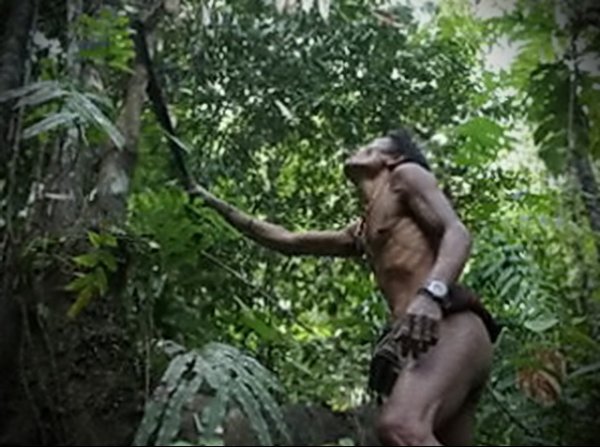
The area between the arboreal vault and the ground is called the lower tier of the jungle. Here, under the overhanging branches covered with dense foliage, it is always darker, cooler and drier. After all, in order to break through the dense foliage and reach the ground, the rain streams take as long as ten minutes. The lower tier of the jungle is home to all kinds of animals, including anteaters, lemurs and tree kangaroos. The rainforest land is teeming with small insects, but there are also large animals, such as forest elephants. Many animals living here are nocturnal and only go hunting at dusk.
Edible and medicinal plants
The jungle is home to millions of trees and shrubs. Over 80 percent of useful and edible plants for humans came to us from here, from rainforest... Among them, it will be enough to name coffee and cocoa beans, from which chocolate, bananas, pineapples, vanilla, peanuts, potatoes, peppers and sugarcane are made. In the Amazon jungle alone, there are no less than 3,000 species of fruit and fruit trees. We only grow 200 of them for our food, while the locals use as many as 2,000.
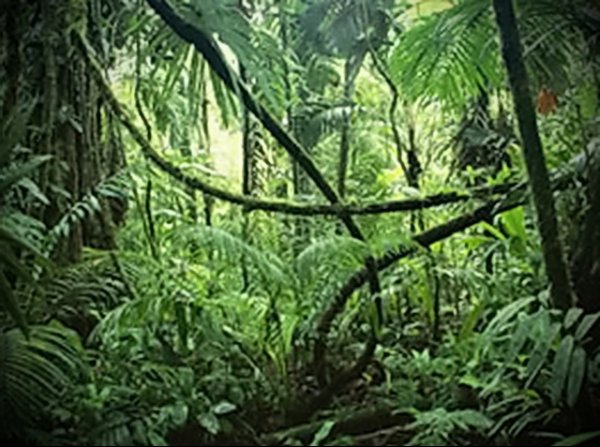
Many jungle plants have medicinal properties. A quarter of the medicines produced worldwide contain medicinal plants from the rainforest, and this despite the fact that scientists have studied only one percent of the plants found in the jungle. Many species of tropical plants are endangered. For example, the pink periwinkle from the island of Madagascar, which is located off the coast of Africa, has been successfully used in the treatment of blood cancer, or leukemia, but, unfortunately, this plant is on the verge of extinction.
All kinds of animals live under the arch of the jungle - birds, monkeys, snakes, butterflies and tree frogs, and they all have enough space and food here. Giant plants - lianas stretch from tree to tree, braiding them with their rings, crush the birds and butterflies, collecting nectar and pollen from lush orchids.
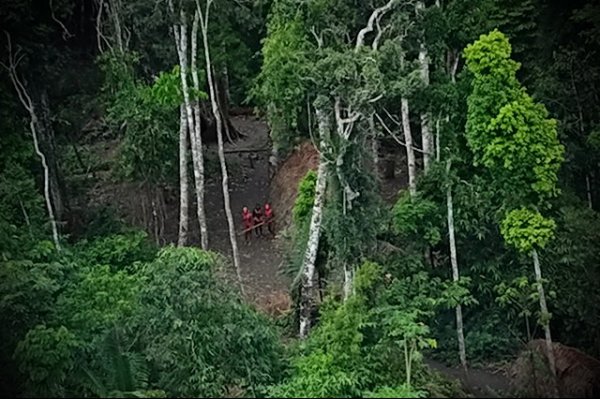
The jungle is in danger
Rainforests play a very important role in the life of our planet. Where the jungle disappears, the climate changes - less rain starts to fall, the number of plants decreases, and if a tropical downpour passes, the water will swamp the soil, because the roots of the trees will no longer absorb it. In addition, rainforests remove carbon dioxide from the atmosphere, thereby preventing global warming, or, as they call it, the greenhouse effect. However, the rainforests are endangered. If in 1950 the jungle covered 14 percent of the Earth's surface, now it is only 6 percent. They are cut down for timber and in order to clear land for fields and farms. Especially violent jungles are being destroyed in poor countries with underdeveloped economies. Scientists claim that about 137 species of plants, insects and animals living in the jungle disappear from the face of the Earth every day. This amounts to 50,000 species per year. If this process is not stopped, the jungle will completely disappear from the face of the Earth by 2040.
V rainforest many people live. Some of them, such as the Yanomato tribe from the Amazon forests that stretch across Brazil and southern Venezuela, have lived in their villages, built under the arch of the jungle, for hundreds, maybe thousands of years. Many of these tribes are gradually dying out from diseases that aliens bring here, or from the fact that their lands are seized by the state, displacing the aborigines from their homes. If the tribes living in the jungle die out, the knowledge accumulated about the plants and animals of the rainforest will perish along with them. local residents for hundreds and thousands of years.
The Amazon Basin is the largest lowland on Earth with an area of over 6 million km2. Almost all of this territory is occupied by tropical rainforest (Amazonian jungle). It is the largest tropical rainforest in the world, accounting for half of the world's remaining rainforest. The axis of the region is the Amazon - the most deep river the world. It carries up to ⅕ of the flow of all rivers in the world into the Atlantic Ocean. The Amazon and its tributaries collect water from the territories of 9 states: Peru, Brazil, Colombia, Venezuela, Ecuador, Bolivia, Guyana, Suriname, French Guyana.
The discovery of the Amazon
The first European to cross the Amazon from the foot of the Andes to Atlantic Ocean, was the conquistador Francisco de Orellana. Together with the expedition of Gonzalo Pizarro, he set off from the conquered Peru towards the equator. After a series of serious trials, Orellana left Pizarro's expedition and headed with his men downstream of the river they found. A long and arduous journey eventually brought them to the Atlantic Ocean.
Francisco de Orellana not only discovered this great river for Europeans, but also gave it the name by which it is known to us today - the Amazon, the Amazon River.
Modern researchers do not believe the testimony of Orellana and his companions about the existence of tribes of warlike women - Amazons in these places. Most likely along the way they met women who fought alongside men, and the rest of the story was born as a result of misunderstandings between the Spaniards and Indians.
One way or another, the path traveled by the group of Francisco de Orellana is amazing, because even in our time these places are extremely inaccessible and wild. These people managed not only to make their way through the impassable jungle, with difficulty finding food, but also to withstand numerous and unknown tropical diseases!
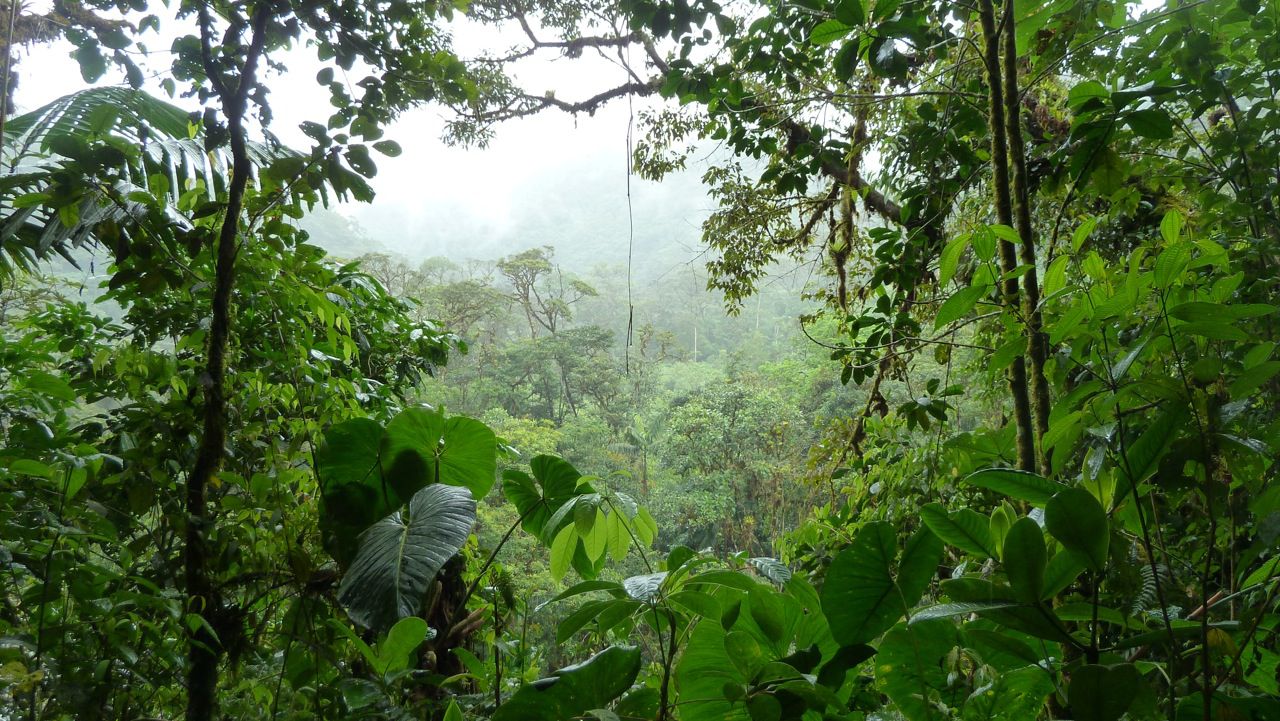
Flora and fauna of the Amazon
This region is of immense importance due to its unique ecosystem. Many species of flora and fauna of the Amazon are endemic - all over the world they can be found only here.
The rainforests of the Amazon are incredibly biodiverse! Every tenth described species of plant or animal is found in Amazonian jungle... Here is the world's largest variety of plants. According to experts, there are 150,000 plant species per km2, including 75,000 trees. This region is still little explored and many representatives of the local flora and fauna are not known to science. ResearcherMichael Hopkins believes that the actual number of plant species in the Amazon is 3 times higher than known today.

Fauna
There are many more animal and plant species in the Amazon than in the rainforests of Africa and Asia. There is a huge number of insects, birds, mammals and reptiles. The Amazon and its tributaries are home to over 2,000 species of fish, some of which are well known to aquarium keepers: guppies, swordtails, scalars... Here you can meet arowana fish reaching a meter in length. It jumps out of the water and feeds on beetles sitting on branches hanging over the water. But the most famous inhabitants of these rivers remain piranhas- predatory fish that can attack even large predators crossing the river.
The largest rodent in the world can be found in and near rivers - capybara... The weight of this animal reaches 50-55 kg, and outwardly it resembles a guinea pig. You can also see here pink river dolphins, caimans, river turtles, tapirs... On the banks of rivers and lakes, spending a significant part of their time in the water, they live anacondas are the largest of the snakes.
This habitat jaguar- a large predator of the feline family. In the evenings and before dawn, he ambushes in tall grass or in a tree. Jaguar hunts capybaras, ungulates like bakers and tapirs, birds, monkeys, snakes, rodents and even turtles. Jaguar's powerful jaws are able to bite through their shell. This predator swims well and pursues its prey even in the water.
The jaguar played a huge role in the cultures of pre-Columbian America. Many Indian legends are associated with it - the most powerful predator South America enjoyed honor and respect.
Victoria Regia
The most famous plant in the Amazon is Victoria regia, the largest water lily in the world. Many travelers have described the beauty of Victoria regia in their notes, poets dedicated poems to it. Victoria's giant leaves can be 2-3 meters in diameter and can hold up to 50 kg! Victoria regia blooms from early March to July. Its flowers have a delicate apricot scent and reach 40 cm in diameter. You can see the blooming Victoria Regia only at night - the flowers bloom in the evening, and in the morning they go under the water. The petals on the first day of flowering have a pale white color, which the next day becomes pale pink, then dark crimson and purple.

The Amazon jungle is associated with one of the most exciting legends about lost city Inca. After the conquest of Peru by the Spaniards, the last rulers of the Incas left for a city in the jungle, where they lived from 1536 to 1572. The city was called Vilcabamba. This is how Martin de Murua, a Spanish missionary who served in Peru during those years in his “ Of the general history Peru. ” For, in order to please them, the Indians supplied them with everything they could get from the outside world. And they enjoyed life there. "
The Spaniards managed to visit those places and describe them in the chronicles, but then traces of the location of Vilcabamba were lost. For many years, explorers and travelers have sought to find this place. And it was for this purpose that Hiram Bingham, a Harvard scientist, came to Peru in 1911. He took the city of Machu Picchu he had found for Vilcabamba. Studies of this place and comparison of the description of Vilcabamba with Machu Picchu have shown that Hiram Bingham's opinion was erroneous.
It is more likely that Vilkabamba was the city of Espiritu Pampa (Espíritu Pampa), which is located in the jungle about 500 km northwest of Cusco. Hiram Bingham discovered this place in 1911, but did not realize how big Espiritu Pampa was. Over the centuries that have passed since the time when the Incas lived here, the rainforest has completely taken over the city. Hiram Bingham found only a few small buildings and did not give them due importance. We can say that the honor of the real discovery of Espiritu-Pampa belongs to another American explorer, Gene Savoy. It was he who, with his expedition of the Club of Andean Explorers in 1964, discovered the true dimensions and penetrated the secret of Espiritu Pampa - ancient Vilcabamba.
Huge Indian cities in the jungle
In Spanish chronicles, in particular in the diary of the Dominican monk Gaspar de Carvajal, who accompanied Francisco de Orellana on his expedition, there is a mention of huge Indian cities in the jungle. For many years it was believed that travelers were mistaken in overestimating the size of the cities they saw and the number of inhabitants. Why did scientists not believe in the possibility of the existence of large cities in the jungle? The fact is that the acidic soil of the Amazon is unsuitable for agriculture; a large number of people would simply have nothing to eat here. However, large tracts of unusually fertile soil, Terra Preta, were then discovered. At the end of the 20th century, scientists came to the conclusion that Terra Preta was created by human hands many centuries ago. The Amazon soil, unsuitable for agriculture, was fertilized with a complex composition of fertilizers, which radically changed its characteristics. The effect was so strong that to this day the Terra Preta plots are fertile. The composition of this unique fertilizer has not yet been deciphered and reproduced.
This discovery confirmed the possibility of the existence of many thousands of Indian cities in the Amazon jungle during the Inca Empire.
Wild Amazon tribes
According to various sources, today 400-500 tribes live in the rainforests of the Amazon. Of these, about 75 tribes do not contact the outside world at all. There are hundreds of different languages in this region, belonging to 34 language groups.

National parks of the Amazon
There are a lot of national parks: National park Manu - one of the largest reserves in the world, the parks of Cordillera Azul, Pacaya-Samiria, Alto Nanay, Pucacuro, Ampiyaco, Alpahuayo - Allpahuayo Mishana) and many others.
Climate of the region
The average temperature throughout the year is -30º
Monsoon season: mid-December - mid-May
Dry season: mid-May - mid-December
Most high level water in the river in May, the lowest in September.
You can go to this region in any season, as each of them has its own advantages. During the rainy season you can see flowering plants attracting birds and primates descending to the water itself.During the dry season, when the water level drops, you can see migrating schools of fish, birds attracted by easy prey, caimans hunting fish.
Where to go
In Peru, there are 3 most interesting places to visit the Amazon jungle:
it The largest city on Earth (!), which has no land connection with other cities (not counting the 100 km of road to the small town of Nauta). You can only get to Iquitos by water or air.
The date of foundation of the city is considered to be 1757. In the beginning it was a Jesuit mission. The city began to grow in the 19th century in connection with the beginning of the "rubber fever". Here, the production of rubber from natural raw materials - a tree growing in the Amazonian jungle - began. The tycoons who owned rubber factories set up opulent mansions that still give the city a unique style.
Manu National Park is one of the largest nature reserves in the world: it covers almost 2,000,000 hectares and is located at an altitude of 300 to 4,000 meters above sea level. Due to this location and the vast territory, several different ecosystems are found in the park, which provides a great variety of plant, insect and animal species. Manu is the reserve with the largest number of biological species in the world!
Most of the park is closed to visitors, only scientists are allowed in, but even for them it is difficult to get a pass. Visitors can get intoManu protected area, but only as part of teams organized by accredited agencies. A limited number of visitors are admitted to the park daily. In this part of the park, you can observe a huge variety of landscapes, animals and flora, river bends form lagoons with a magnificent variety of flora and fauna.
Puerto Maldonado
This small town 55 kilometers from the border with Bolivia is very similar to Iquitos, but much easier to get to. In the vicinity of Puerto Maldonado, there are several national parks where you can see caimans, monkeys, capybaras and other animals, reptiles, insects and birds.




